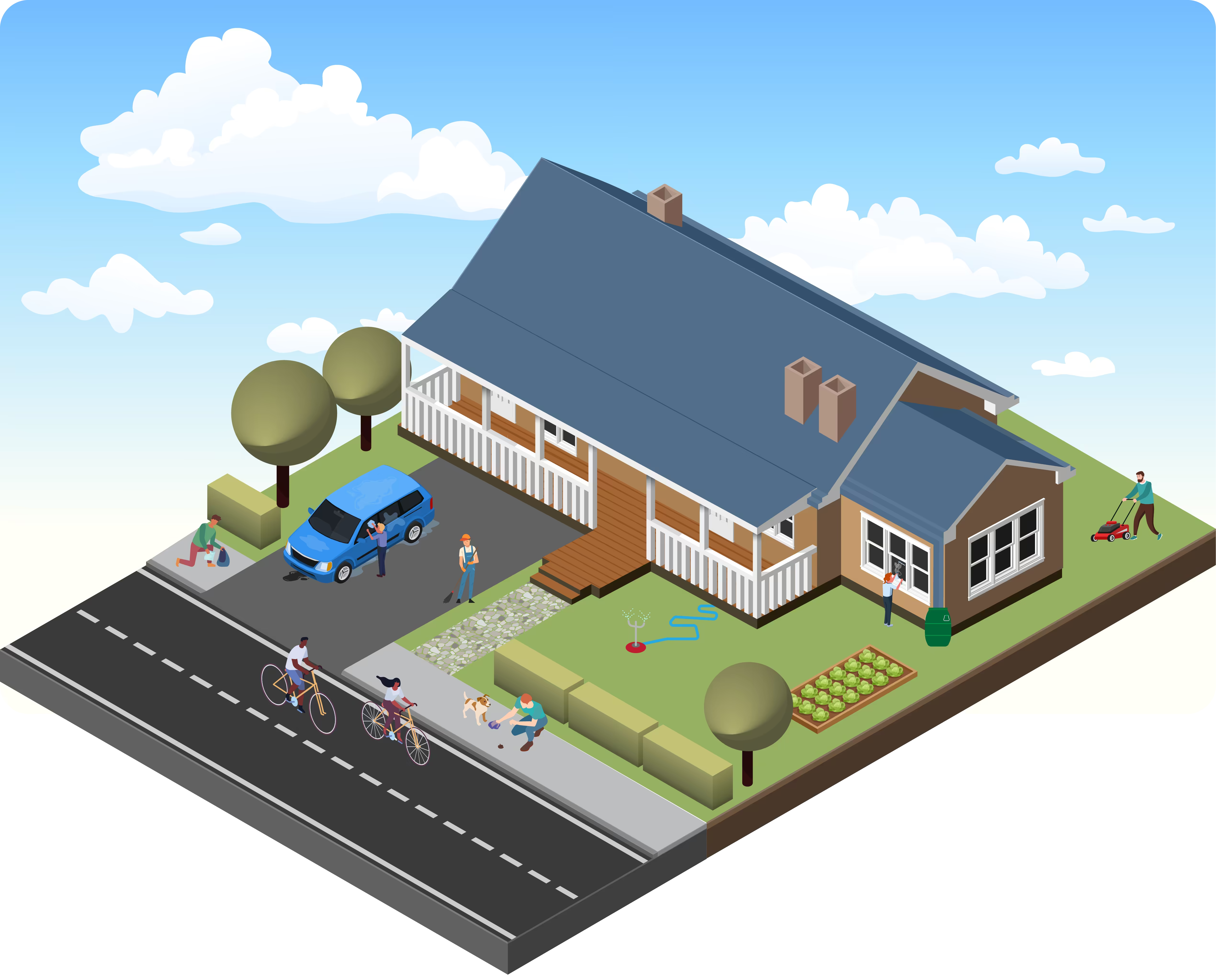How can you help
Now that you have learned more about stormwater, you might be wondering how you can help. Here are several things you can do to help!
Ver esta pagina en Español?
Click on the numbers in the picture below to see more information on how you can help.

Now that you have learned more about stormwater, you might be wondering how you can help. How can you have an impact on stormwater? Here are several things you can do to help!
- Be responsible with your trash
- Pick up trash and put it in a trash can.
- Cover trash containers.
- Do not dump anything into storm drains.
- Be a responsible car owner
- Take care of your vehicle to keep fluids from leaking on driveways, roads, and parking lots.
- Wash your car on the lawn or gravel instead of your driveway or street, or go to a carwash that recycles the water.
- Be a responsible pet owner
- Clean up after your pet and throw the waste in a trash can.
- Be a responsible water user
Create a rain garden at your house. The City of Los Angeles Stormwater Program has directions for this Do-It-Yourself Project.
- Direct downspouts away from paved surfaces or connect them to a rain barrel to use the water later. Downspouts carry rainwater from roof gutters to the ground.
- Water your lawn at in the early morning or evening, if at all.
- Clean roof gutters.
- Be cautious of household chemicals
- Try not to use pesticides.
- Limit the use of lawn and garden chemicals or use organic alternatives.
- Follow product directions when throwing away chemicals, such as motor oil, grease, and paint.
- Care for your lawn
- Cover piles of dirt, mulch, yard waste, and other debris. Prevent yard waste from entering storm drains.
- Choose low-maintenance native plants. They use fewer chemicals and less water.
There’s more! You can also follow these best practices to preserve stormwater:
- Create green surfaces around your home to that more stormwater is soaked up by the ground and less stormwater and dry weather runoff enter the storm drains, taking pollution along with it. Alternatives such as paving blocks, gravel, cobbles, brick and natural stone can replace asphalt and concrete in driveways, parking lots, and walkways. These alternatives allow stormwater to stay on site and soak into the ground.
- Sweep driveways and sidewalks instead of hosing them off. Collect the material in a dustpan and throw it into a trash can instead of sweeping it into the street!
- Drive less. Walk, ride your bike, or take the bus.
- If you have a septic system, maintain it on a set schedule to prevent leaks.
- Attend programs and events in your watershed: